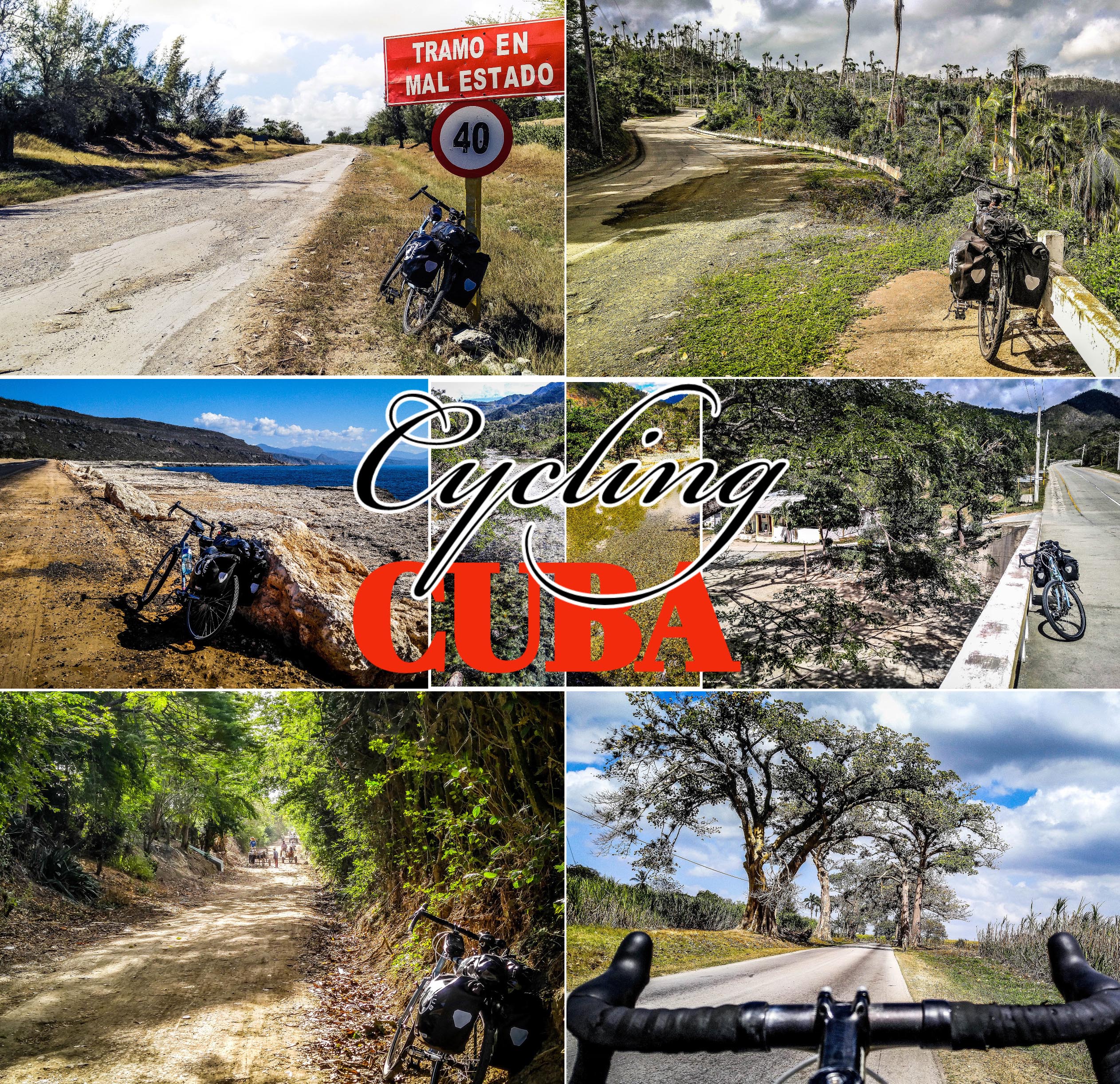- CYCLING CUBA recounts a bicycle journey around Cuba Oriente. Contemplating bicycle travel in Cuba, to see Cuba by bicycle on your own, on a self-guided and self-supported trip, is an ideal way to see Cuba, whether traveling solo, or traveling with your spouse or a friend as opposed to any kind of organized travel, group travel above all.
- CYCLING CUBA is a stage-by-stage account of the journey and a full-color 802 photographs travel pictorial, a photo-essay, a documentary, and a guidebook with all the info you need to set out on much the same journey around Eastern Cuba as the author did.
Start your trip in Holguin and ride to Gibara, a small sleepy fishing port and a place of historical interest. From Gibara, pedal a quiet highway along the bay, then cut across a remote agricultural back-country. The scenery is idyllic. Past Guardalavaca, ride up and down scenic hills until the road plunges downhill to the coastal plain and Banes. Riding through the agricultural flatland of sugarcane, bananas, and scrubland with roaming cattle, you’ll reach Mayarí, another pleasant town.
Cycling the coastal road from Moa to Baracoa, you come across entire hillsides and shoreline flats carpeted in broken and uprooted palms, their trunks carpeting the landscape as if deposited there by design. Riding past river inlets and coves, you enter the remote, hurricane-battered, yet charming outpost of Baracoa, Spain’s first colonial capital in Cuba.
After you soak up Baracoa’s charm, then take off to tackle the La Farola road, the highlight of your trip. Climbing and descending the winding mountain road, you traverse the lush mountains of the east and descend to an arid yet ravishingly beautiful south coast. As you pedal toward Playa Imias, cacti are the only sign of vegetation, but the coastal panorama in either direction is stupendous. Having your fill of the coastal scenery, you begin a scorching hot ascent into the arid interior, and skirting the Guantanamo Bay you arrive in Guantanamo.
Another stage brings you back to the ocean at Santiago de Cuba. Then it’s back inland. After a stop at the El Cobre sanctuary, Cuba’s most sacred pilgrimage shrine, you climb again before you begin a gradual downhill to the plains en route to Bayamo. Following day, an easy ride, your last cycling day in Cuba, brings you back to Holguin.
- The narrative and the pictorial are based on a journey in January-February 2017, so in a pre-pandemic era. Fast forward to September 2020, and mainland Cuba, as most of the world remains shut to tourism. But Cuba announced it may reopen to tourism by the end of the year. If so, that would be great news to tourists from all over the world, including the Americans, because self-supported bicycle travel may be one way how to comply with the regulations in place under Trump administration. Things could change under Biden, but regardless of who will win the elections in November, discover what’s it like to travel in Cuba on a self-guided and self-supported bicycle tour.
Aside from Trump and the pandemic, bicycle travel around Cuba Oriente will be much the same for some time after the pandemic. Cuba is changing, but slowly, and that’s part of its appeal for you, the Cuba traveler.
- Written by an avid cyclist and a photographer, with many cycling guides to his name, an adventure and cultural travel professional with an architectural background and four decades of travel throughout the world, CYCLING CUBA provides an insightful background for a richer and more rewarding travel experience on this Caribbean island.
- Containing 802 photographs with informative narrative, cycling details of route stages and distances, a list of accommodations, and the route-related GPX cycling tracks you can download, the book promises to entice any intrepid or armchair traveler.
The downloadable format of the title is a PDF.
The paperback version of this title is available on Amazon.
